Phacellophora camtschatica (Brant, 1835)Common name: Fried-egg Jellyfish, Egg yolk jellyfish |
|
| Synonyms: None | 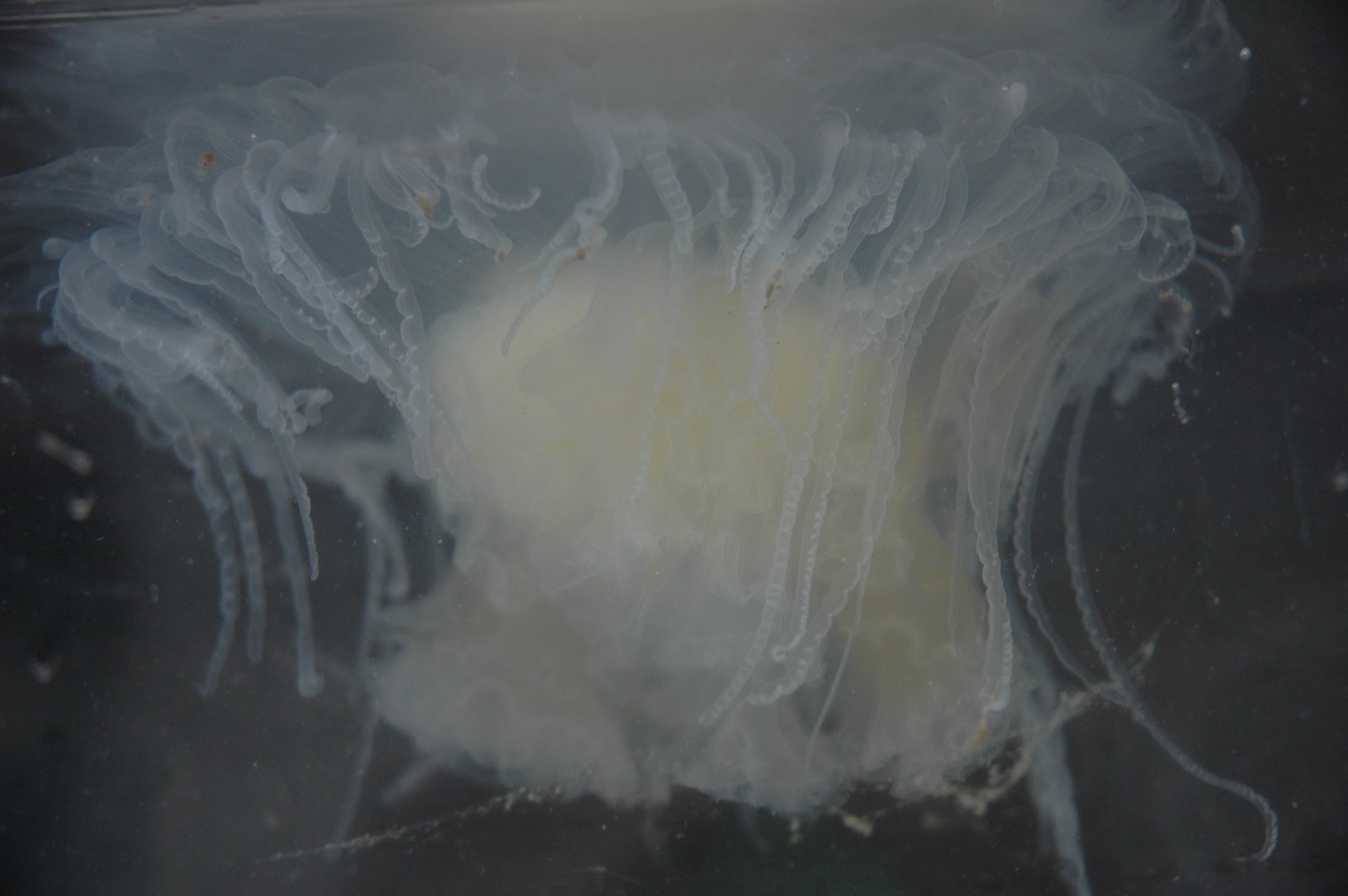 |
| Phylum Cnidaria
Class Scyphozoa Order Semaestomeae Family Ulmaridae |
|
| Phacellophora camtschatica collected in Rosario Bay. Bell width is approximately 15 cm. | |
| Photo by: Dave Cowles, July 2006 | |
How to Distinguish from Similar Species: Cyanea capillata is similar but P. camtschatica can be identified by a transparent margin consisting of 16 large lobes that alternate with smaller lobes (photo). Also, Cyanea capillata coloration often includes reddish hues but this species does not.
Geographical Range: Worldwide; on the western United States coast from Alaska to southern California.
Depth Range: Pelagic
Habitat: In temperate oceans.
Biology/Natural
History: Spends much the
time motionless or slowly pulsing the bell
while drifting with tentacles
extended 10-20 feet or more. Feeds on gelatinous zooplankton,
especially
other medusae.
Usually with symbiotic amphipods
on the subumbrella
and juvenile crabs on the exumbrella,
including Cancer
gracilis. Also hosts the barnacle Alepas
pacifica
and juvenile fishes. Has only a mild sting. In the
life cycle,
fertilized eggs develop into ciliated planula
larvae which swim, then settle and metamorphose into scyphistomae
polyps.
Mature
scyphistomae
have 30-44 tentacles and reproduce asexually by side budding as well as
strobilating
to produce ephyrae which grew up into mature medusae.
In the laboratory it took about 9 months for an ephyra to grow into a
mature
medusa.
| Return to: | |||
| Main Page | Alphabetic Index | Systematic Index | Glossary |
References:
Dichotomous Keys:
Kozloff
(1987, 1996)
Smith
and Carlton, 1975
General References:
Gotshall
(1994)
Wrobel
and Mills (1998)
Scientific Articles:
Moura, Carlos J., Nikolai Ropa, Bruno Ivo Magalhães, and João M. Gonçalves, 2022. "Insight into the cryptic diversity and phylogeography of the peculiar fried egg jellyfish Phacellophora (Cnidaria, Scyphozoa, Ulmaridae)." PeerJ 10: e13125.
Reum, Jonathan P., Mary E. Hunsicker, and Caroline E. Paulsen, 2010. Species composition and relative abundance of large medusae in Puget Sound, Washington. Northwest Science 84:1 pp. 131-140
Widmer, Chad L., 2006. Life cycle of Phacellophora
camtschatica
(Cnidaria: Scyphozoa). Invertebrate Biology 125:5 83-90
General Notes and Observations: Locations, abundances, unusual behaviors, etc.:
These become more common in the Rosario area in late
summer.
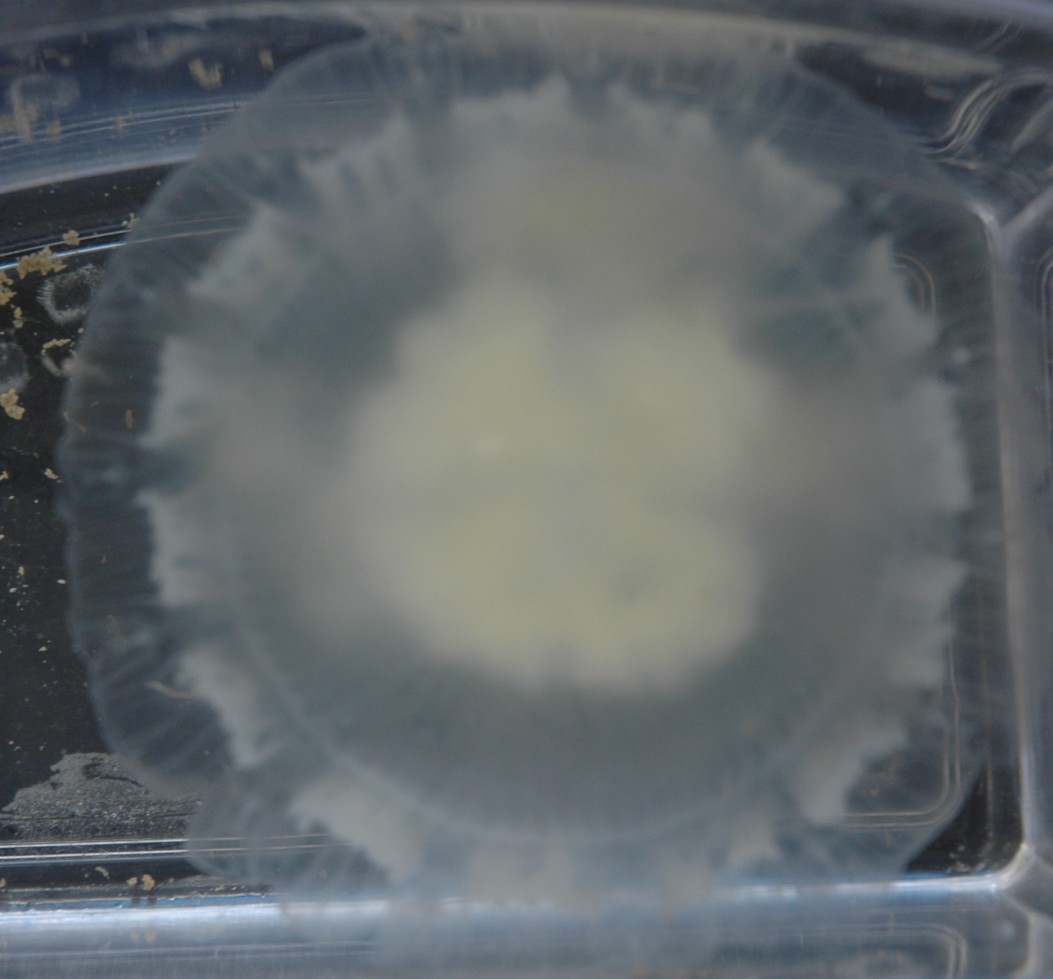
This top-down view of an individual in an aquarium shows the 16
clusters
of tentacles
and the gut.
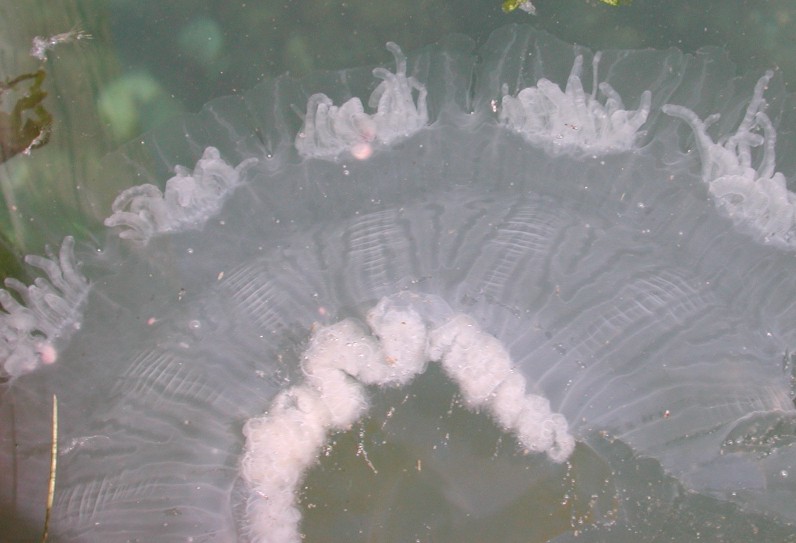
This view of the underside of an individual swimming upside-down at
the water's surface clearly shows the tentacles
which occur in 16 linear clusters.
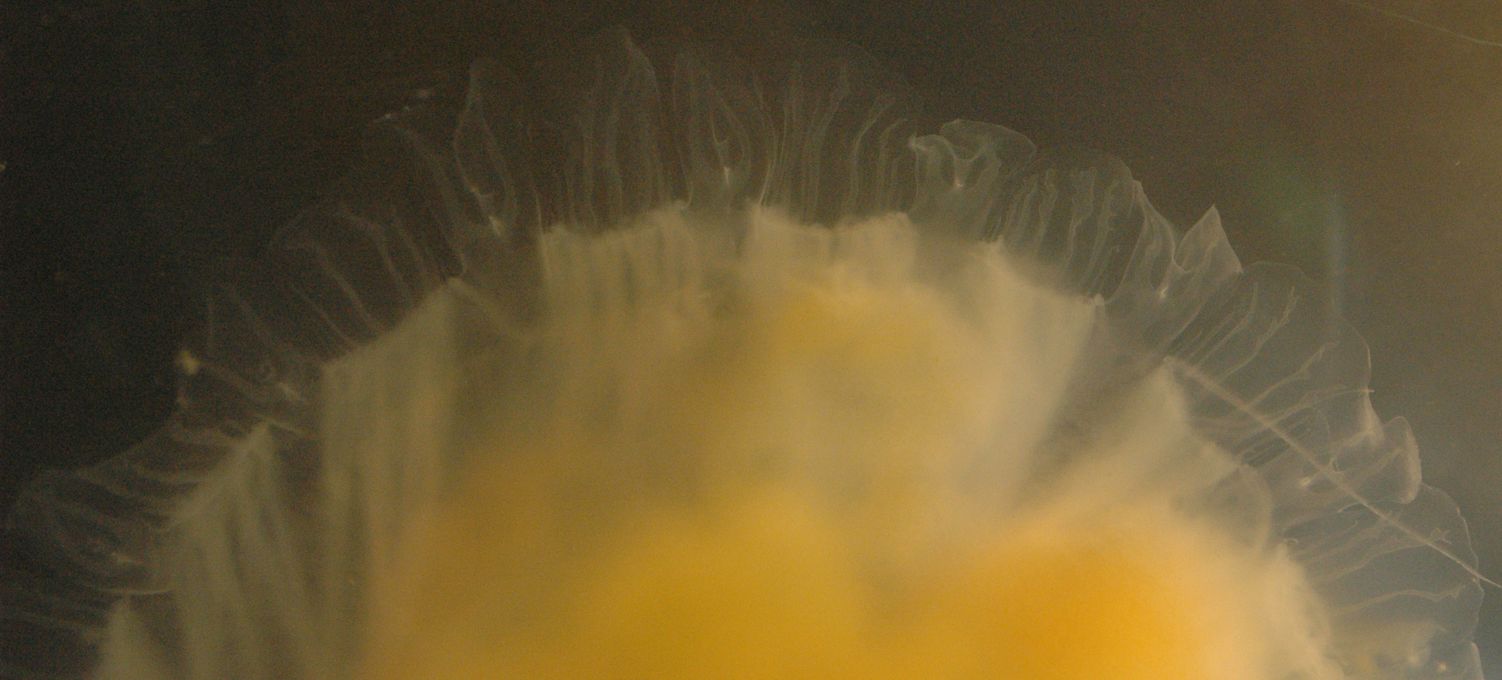
This view of the edge of the bell shows some of the lappets
and rhopalia,
which come in 16 sets.
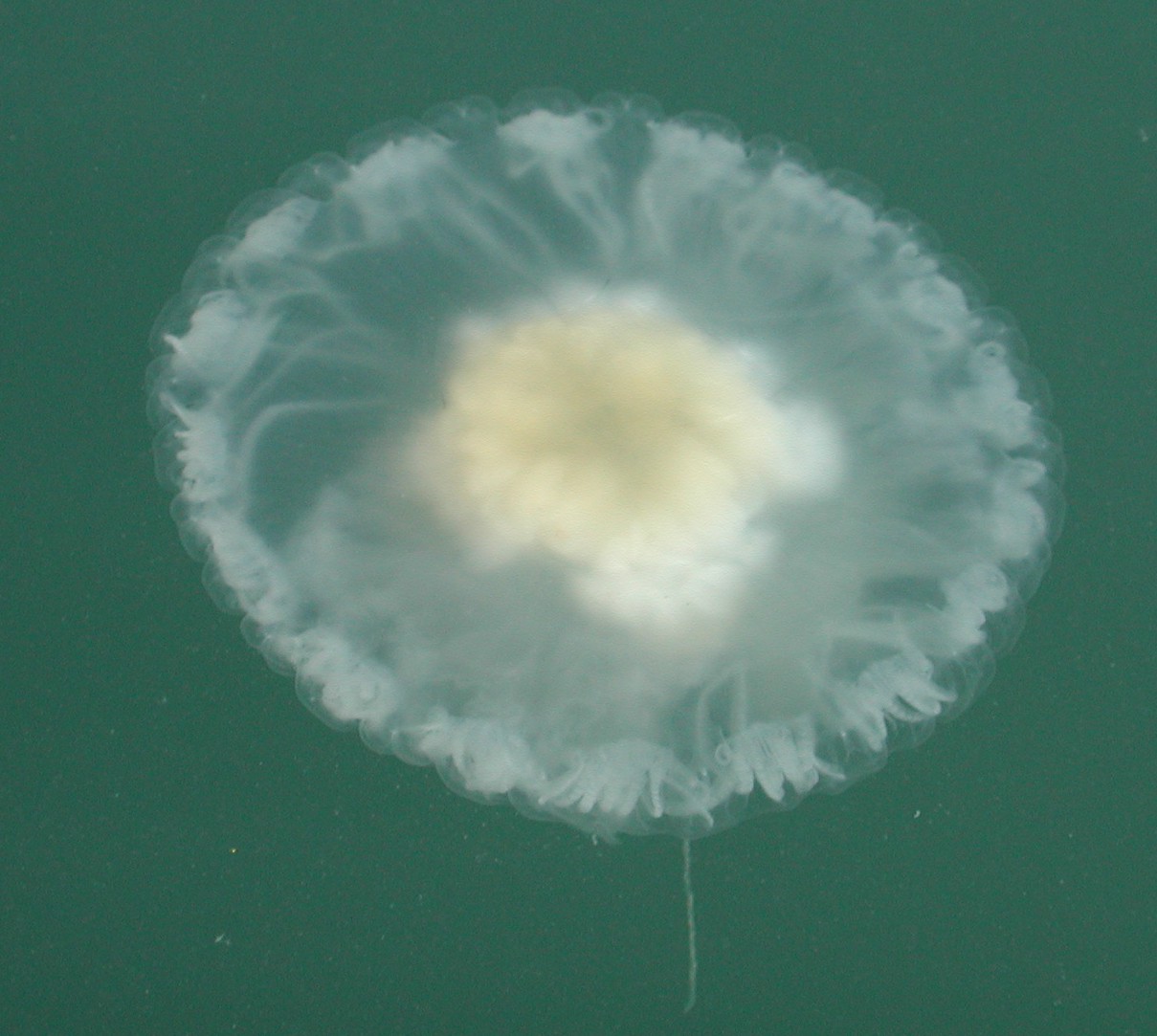 |
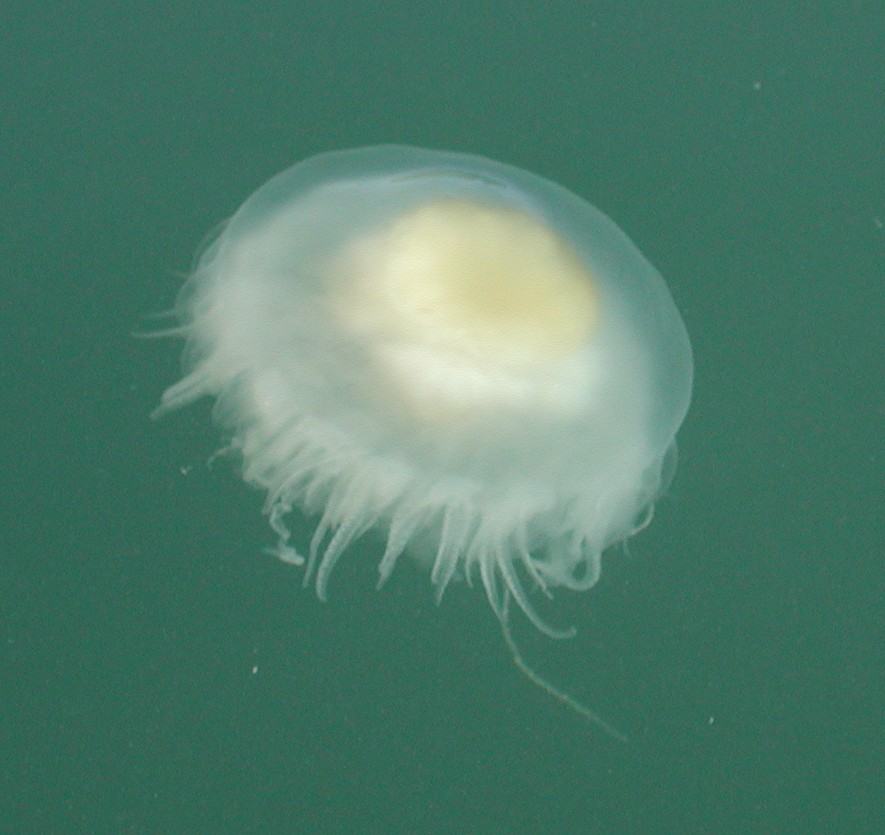 |
| These views of a Phacellophora camtschatica swimming near the surface of Rosario Bay show the extremes of configuration before and after a swimming stroke. | |
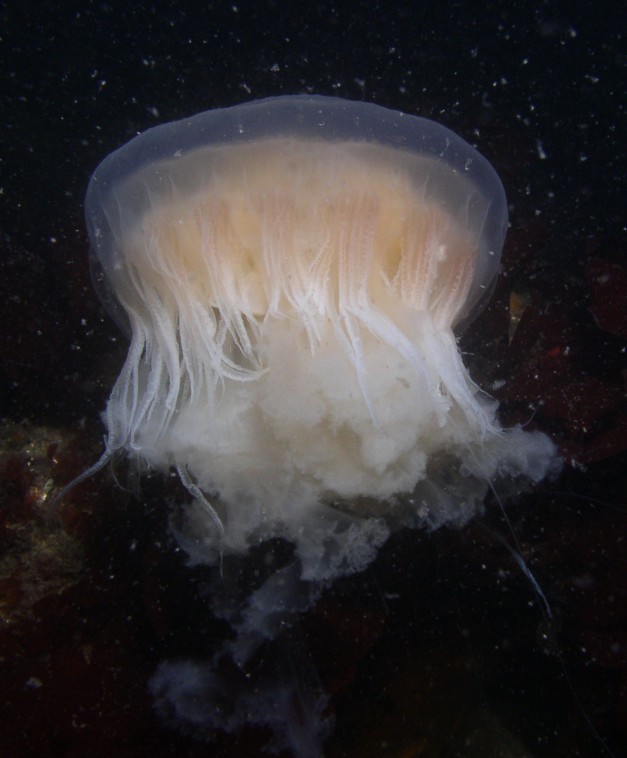
An underwater view of a swimming individual by Kirt Onthank, July 2007.
The tentacles
are stringlike around the outer margin and the oral
arms are lacy, hanging down from around the mouth.
Authors and Editors of Page: Christina R. Smith 7/2002
Christina R. Smith(2002): Created original page
Edited by Hans Helmstetler 12-2002, Dave Cowles 2005-